Why gliding experience makes us safer pilots. Kreisha Ballantyne experiences the seven valuable skills advanced by gliding.
Clunk! That’s both the sound of the tug rope leaving the glider and the sound of your brain realising you’re up at 2000 ft without an engine. In that moment, a powered pilot must own and acknowledge that they’re going to have to land without the energy of an engine.
There are no second chances at landing a glider, a fact all too blatant to Captain Bob Pearson, pilot of Air Canada flight 143, the Boeing 767 that lost both engines due to fuel starvation, and became the Gimli Glider. Captain Pearson’s near-perfect dead-stick flying, and the skills he utilised in landing the powerless jet serve as the definitive demonstration, for every pilot, of the value of gliding experience.
In an attempt to understand these skills first hand, I was invited by glider pilot Leonie Furze to the Bathurst Soaring Club, based at Piper’s Field, just to the northwest of Bathurst. As a powered-pilot with around 600 hours, I asked Leonie how she expected my glide experience to differ from a ‘normal’ powered flight.
‘The most interesting thing about gliding,’ Leonie explained, ‘is that every flight is different. In order to succeed as a glider pilot, you have to harness so many things your understanding of the weather becomes critical; you become an expert in energy management; you spend so much time looking outside, always assessing the options for landing. You’re critically aware of your altitude, your surroundings, your attitude relative to the horizon at all times. You won’t believe the way it extends your skill set as a pilot.’
‘I’m often asked by powered pilots, “How long before I can solo a glider, as I already know how to fly?”’ commented instructor Nick Wills. ‘My standard (tongue-in-cheek) reply is “slightly longer than if we picked a random person off the street!”’
As an instructor in gliding and powered flight, Nick extolled the benefits of gliding experience. ‘I cannot recommend it highly enough,’ he said ‘The advantages are enormous—a glider pilot must fly accurately and efficiently, being in balance at all times, because energy management is critical. Adverse yaw in turns needs precise coordination of stick and rudder—those pedals are not footrests!’
‘You learn to gauge height and distance (glide angles) with instinctive accuracy at all times during all phases of flight—you don’t have an engine dragging you through the sky—so you are constantly looking for options to land safely. When you do land, you have got one chance and one chance only. There is no going around!’
‘What do you call a Cessna 172 when the engine quits? Answer: a glider (although not a very good one!) In addition, the Gliding Federation of Australia (GFA) require full spin recovery checks for all pilots once per year (in my opinion, this should be a requirement for any pilot who flies an aircraft capable of spinning—which is most of them).’
Keen to experience these benefits myself, I’m introduced to my instructor for this session, Graham Brown—a glider pilot with over 40 years experience—and my long-winged bird, a sleek looking ASK 21, a glass-reinforced plastic two-seater mid-wing glider with a T-tail.
Touchy feely—fly by senses, not just by instruments
Aside from the enormous wings, which boast a glide ratio of 36:1, the obvious difference between a glider and a powered aircraft is in the cockpit instrumentation—in a glider there’s barely any.
An ASI, AI, compass and the glider’s unique instrument, the variometer, used to determine rising or sinking air, are the main instruments in the ASK 21. But, as Graham is about to demonstrate, a competent and experienced glider pilot can manage without any of them.
‘Gliding is very much about feeling the sensations of flight,’ he explains. ‘Your attitude, along with the thermals, will determine your altitude. The sound of the wind will indicate your airspeed. You will feel, in your seat, whether you are climbing and descending. And, at this stage, you will know where you are in relation to the airfield, because we will not go far, and you’ll be able to see it.’
It’s a very tactile experience, one that emphasises why the senses of vision, hearing and balance are so important to a pilot.
As we hook up to the tug, Graham reveals the airbrakes which increase drag, reduce lift and are used to control the rate of descent during the approach to land. The ideal approach is a ‘half-brake approach’. They can also be used to descend rapidly from altitude.
Graham’s safety briefing includes the tug release control (‘please don’t touch that one’ he comments, sardonically) and the trim, which sits alongside the stick. ‘No throttle!’ I remark, pointlessly.
With the wind straight down the runway, we begin rolling and Graham demonstrates how to stay out of the tug’s slipstream by adopting a high or low position. At 2000 ft, Graham asks me if I’m ready, and clunk, the tug banks to the left, we bank to the right and we’re soaring. I suffer an initial moment of panic before calm descends over me.
Without an engine, the sounds are so different—you can hear only the wind and it becomes immediately clear that you are soaring—that you are experiencing flight’s most pure form. Graham shows me how to listen to the wind to judge our airspeed, and by changing attitude, we change the sound of the wind, first in the climb (quieter) and in the descent (when the wind howls). In this, I’ve learnt how, in a case of instrument failure, a glider pilot could be confident in landing the aircraft without the instrumentation on which a powered pilot is so dependent.
Fancy footwork—learning (again) the importance of rudder
It’s a wonderful day for gliding, with plenty of cumulus clouds providing us our desired lift, and we experience no problem in climbing to 6000 ft.
Graham hands the ASK 21 over to me, and instructs me to turn, to climb, to descend and to have a ‘good feel’ of the controls. ‘One of the benefits of a glider is that it allows us to demonstrate adverse yaw,’ explains Graham. ‘This is turn shows the importance of using the rudder in keeping the aircraft in balance,’ he says, giving the right rudder a huge boot to demonstrate.
These rudder skills are also vital in a non-powered landing—without an engine to provide power close to the ground, and with a go-around not an option, a glider pilot’s landing requires a great deal of rudder skill. I think back to the times I’ve relied only on power to rescue me from an ugly approach, and shudder.
Seeing is believing—improve your situational awareness
The cockpit FLARM starts beeping, and I immediately look out for traffic, spying another glider heading our way. ‘It’s common for glider pilots to all head for the same cloud, invariably the best cloud,’ Graham explains. ‘This is why situational awareness is paramount in glider operations. Sighting and avoiding traffic is a critical skill. You can’t assume other aircraft are also FLARM- equipped.’
Another hazard is birds, particularly eagles, who often confuse gliders with birds. However, because there are so few cockpit instruments to monitor, it’s very natural to spend most of the time looking out, scanning for traffic and searching for clouds, as a surfer seeks waves.
Watch the birdies—learn more about the weather
Curious to learn more, I ask Graham for clues. ‘The birds give us a lot of information,’ he tells me. ‘Have you ever seen a flock of pelicans circling high in the sky or a seagull hovering motionless over a headland? The pelicans are flying in a column of rising air (a thermal) and the seagull is flying in the rising air deflected upwards by the cliff face. In both cases the birds are in an air mass that is rising faster than they are descending through it. Gliders exploit exactly the same natural phenomenon.’
While knowledge of the weather is vital to all pilots, it’s paramount to gliders, particularly those participating in a cross-country. ‘On poor soaring days you will be restricted to within glide range of the airfield,’ Graham says. ‘However, on good days, once you are competent, you can attempt recognised flights of 50, 300, 500 or 1000 km. The straight glide performance of gliders varies immensely. A typical club glider will easily glide 10 km for each 1000 feet without encountering any rising air. You soon learn to spot the banks of cloud that facilitate long range gliding.’
Be aware, be spatially aware—and improve your judgment of height and distance
Typically gliders fly at around 70–100 kts between thermals. When circling in lift, the speed may be as little as 40 kts—gliding is all about energy management and this is best demonstrated in the approach and landing. While the wind whistles about us, we commence our descent to the field, and Graham demonstrates the importance of our height and distance from the strip as we fly a circuit. He deliberately overshoots on final to slip off a little height, but just as I remark that we seem terribly high, he deploys the air brakes. We sink like a stone. We aim for the latter part of the strip, to avoid turbulence from the hill. What happens if we undershoot? ‘We don’t,’ answers Graham, with a laugh.
No second chances—learn advanced energy management
Short final in a glider is much like any other—we are certain to land on the nominated point. However, what becomes clear to me (other than the clear absence of engine power) is that landing a glider is like landing a tail-dragger. Turns out all gliders are tail-draggers, which I discover when I ask what prevents us from taking off again, given our weight and the into-wind position we’re in.
‘We stall the aircraft onto the runway,’ explains Graham. It’s another example of energy management—we will run out of lift, and then bring the stick back to pin the tail down. Eventually, we’ll use up all the energy.’ And indeed we do, and I soon realise there’s no energy left to get us back to the hangar.
Smells like team spirit—join a culture of safety
As we wait for the pick up car, Graham details the fundamental importance of teamwork in gliding. ‘It’s not a solo sport—it takes a team to glide. Someone has to fly the tug, there’s someone at the wing to aid with the take-off, another person to collect you from the field.
‘It’s a club sport, and with that comes a club spirit. We’re extremely sociable here—we have a clubhouse, and a series of caravans in which people spend the weekend. A lot of our pilots live in Sydney and spend the weekends up here.
‘A benefit of the sociability of gliding is that it promotes airmanship and safety. We constantly discuss our experiences, and the old mentor the new. We encourage each other to share tips and tricks, and that breeds a culture of safety and respect.’
Upon arrival back at the club I’m introduced to club CFI Bob Hall, who is very keen to hear about my experience. I discover that gliding in Australia has one of the best safety records in the world. Before long, Leonie and Nick are joining in and we’re discussing the many merits of gliding and the way in which it stretches your skills. As they kindly invite me to join the club, and to participate in their next social event, I can’t help but wonder if gliding not only makes you a better pilot, but whether it makes you a happier, more sociable person as well.
The silent solution? Unpowered hours and airmanship
Glider enthusiasts say there’s no better way to keep fundamental piloting skills than by soaring. They say time spent gliding can teach the airmanship skills required for upset recovery.
British pilot, Sarah Kelman, flies an Airbus A320 for low-cost carrier easyJet for work, and flies a high-performance glider for pleasure. In 2014, she spoke to the Royal Aeronautical Society’s 8th International Flight Crew Training Conference in London about what gliding can offer, and why it can be superior to powered aircraft training for upset avoidance and recovery.
‘The skills that I practise in my glider have a direct relevance to my day job in the Airbus A320—both in day-to-day flying and also, particularly, in the non-normal situation,’ she said. ‘The core skills maintained by sport pilots do have a direct and beneficial relevance to the modern jet airline environment.’
Particularly useful aspects of glider flying include the emphasis on hand-flying, the need to be constantly aware of altitude, airspeed and location, the routine practice of flying under control near the stall, and the similarity in handling between gliders and airliners due to their comparable wingspans, Kelman said.
The evidence for gliding remains anecdotal: there are no in-depth studies of its effectiveness as an airline pilot skill-builder. But among the exclusive band of airline pilots who have kept catastrophe at bay by demonstrating professionalism of the highest standard, there is a distinct cadre of glider pilots. Chesley Sullenberger, who along with Jeffrey Skiles successfully ditched US Airways flight 1549 in the Hudson River was one. So too was Robert Pearson, who glided an Air Canada Boeing 767 to a safe landing at Gimli, Manitoba, in 1983. Beyond the airline world, astronaut Neil Armstrong flew gliders, as did the highest scoring air ace of all time, World War II Luftwaffe pilot, Erich Hartmann.
Other demonstrably superb air transport pilots come from military or aerobatic experience, such as Carlos Dardano, who landed TACA flight 110 on a levee near New Orleans in 1988 after a dual engine flameout.
Sullenberger was equivocal on the usefulness of gliding. ‘That was so long ago, and those [gliders] are so different from a modern jet airliner, I think the transfer [of experience] was not large. There are more recent experiences I’ve had that played a greater role,’ he told the Smithsonian Institution’s Air and Space magazine.
However, in the same interview he mentioned how he used a skill that every successful glider pilot learns as second nature: glide path judgement.
‘The short answer is, based on my experience and looking out the window, I could tell by the altitude and the descent rate that neither [airport] was a viable option,’ he told the magazine.
For more information on gliding please visit www.glidingaustralia.org

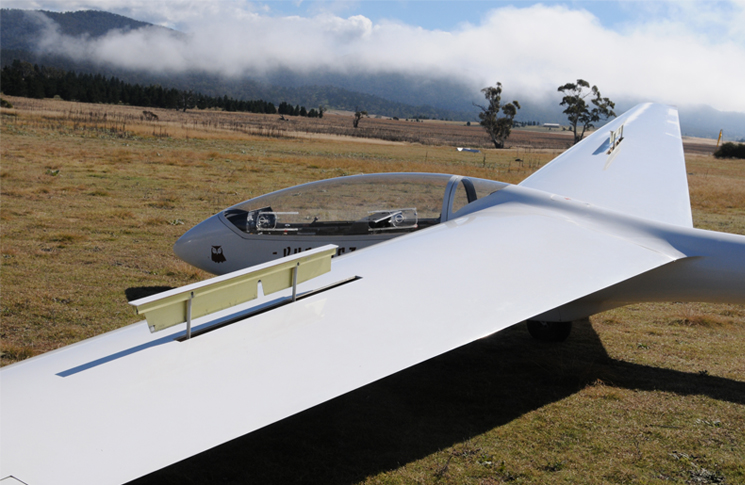
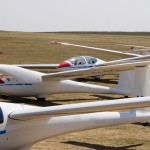
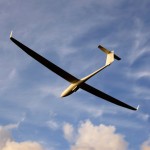
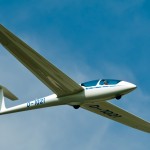
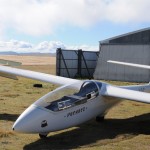
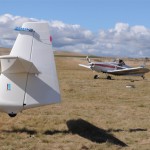
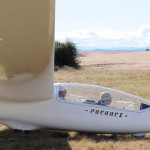
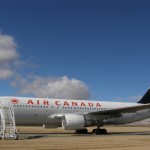
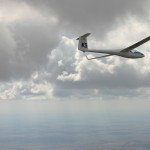
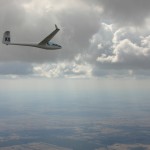
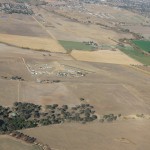
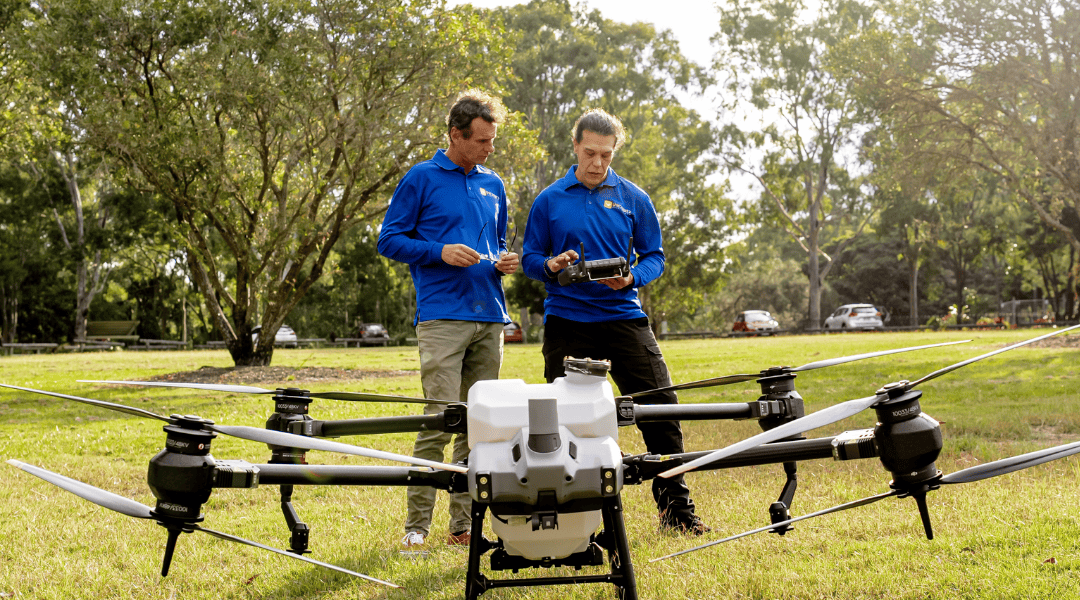
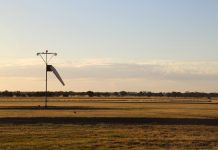
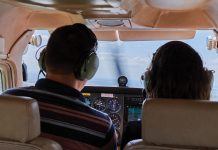

What a great article – well done! (I have a PPL with app. 350 hrs (lapsed), and about 1000 hrs gliding: L2 instructor with Canberra Gliding Club).
[…] Gliding experience and the valuable skills it develops undoubtedly makes for safer pilots, as Kreisha Ballantyne investigated last year in her Flight Safety Australia article ‘No second chances’. […]
Umm, would it be relevant to mention that the incompetent actions of the Gimli Captain, Bob Pearson, resulted in a plane falling from the sky, yet people are celebrating that he didn’t kill hundreds of people due to his negligence?
Bob Pearson personally certified takeoff with no functional fuel measurement systems; certified his own fuel calculations; did them WRONG’ and “ran out of gas” in the air because of his incompetence. That is negligent, incompetent actions by a COMMERCIAL AIRLINE PILOT. His actions resulted in the near destruction of a 767 airliner, its passengers, and innocent families and children on the ground. As it happened, the Captain narrowly avoided murdering people by crashing without crushing innocent civilians. Yet because he did not murder anyone, he is celebrated. What???!!!
Celebrating Bob Pearson is equivalent to celebrating a drunk driver who avoids killing a busload full of nuns and children, by skillfully turning away from crashing into them at the last moment. He’s a near murderer that didn’t kill anyone because of his actions at the last second. He and he alone crashed an airliner, due to his infantile miscalculations to begin with. This is by an airline pilot, with an extraordinary social and legal obligation to protect lives! The plane crashed due to pilot error! So, should he be celebrated because he narrowly avoided killing hundreds because of that? Is Canada on drugs or something??
You got a point there…..
I can not agree more with this article. I am a 15,000 hr GA pilot. I “discovered” the Gliding fraternity only 12 months ago. Not only a new set of friends, but the skills I am honing in Gliding is making my commercial flying significantly better in accuracy, smoothness and judgement.
I think it is unfair to condemn Bob Pearson. It was legal to fly without the fuel gauge and it was multiple errors by ground crew and faulty equipment that resulted in the fuel situation. I techo tried to fix the fuel sender system at an intermediate airport and gave up but did not put the unserviceable notice back on the sender.
The pilot is under much commercial pressure in any case but to resort to victim blaming is unfair. There was a whole process of errors.
Whatever the causal factors, the fact that Pearson was extremely competent in dealing with the consequences and his cool headedness and skills did save the passengers and aircraft and for that he deserves much commendation. They flew the aircraft out three days later.
Rob Brown
It is unfair to condemn the Pilot “fact speaker”. The real fact is that you yourself were not there in person and your take on this is second and third hand. You are also not going to be the judge of what is competent and what is not competent, what is infantile and what is not. You are the one who risks being viewed as having infantile and overblown opinions.
It is unfair to condemn the Pilot “fact speaker”. The real fact is that you were not there in person and your take on this is second and third hand. You are also not going to be the judge of what is competent and what is not competent, what is infantile and what is not. You are the one who risks being viewed as having infantile and overblown opinions.